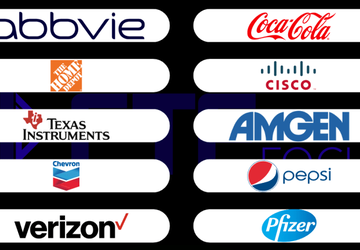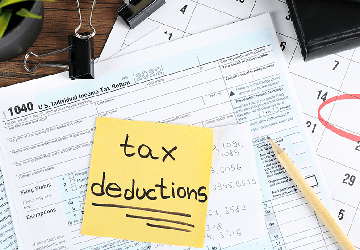5 ETFs to Boost Your Investment Gains by $800 Annually
Do you want to further boost your investment returns without going through the headache of picking stocks?
Exchange-traded funds (ETFs) may be the answer. They are diversified investment vehicles that are low in cost and easy to trade, just like normal stocks.
Imagine adding $800 to your annual investment return without spending lots of hours on company research or even worrying about market ups and downs. That is specifically what carefully selected ETFs accomplish in your portfolio.
In this blog post, we are going to discuss five specific ETFs that will elevate your investment strategy to the next level and help you achieve your financial aspirations.
In the end, you will know which ETFs can combine to provide superior performance. Stay tuned to upgrade your investments!
Why Investing in ETFs is Beneficial?

Exchange-traded funds (ETFs) have revolutionized the investing landscape, offering a multitude of benefits for both novice and experienced investors.
One advantage of using ETFs is their ability to provide instant diversification. Investing in one ETF exposes you to a range of securities, minimizing the risk tied to selecting individual stocks.
Another compelling reason to invest in ETFs is their cost efficiency. ETFs typically feature lower expense ratios than actively managed mutual funds. This cost advantage can significantly impact your long-term returns.
ETFs also offer unparalleled ease of access and trading flexibility. Just like stocks, you can sell and buy ETFs throughout the trading day, providing greater control over your investments.
Whether you're seeking exposure to broad market indices, specific sectors, or even alternative assets, you likely have an ETF that aligns with your investment goals.
5 ETFs to Boost Your Investment Gains by $800 Annually
Now that we've explored the benefits of investing in ETFs let's dive into five specific ETFs that have the potential to boost your investment gains by $800 annually.
These ETFs cover a wide range of markets and sectors, providing a well-rounded approach to enhancing your portfolio's performance.
ETF 1: Vanguard Total Stock Market ETF (VTI)
The Vanguard Total Stock Market ETF (VTI) is the best choice for those seeking broad exposure to the U.S. stock market.
This ETF mirrors the performance of the entire U.S. equity market, including large, mid, and small-cap stocks, providing diversification across more than 3,500 holdings.
With an exceptionally low expense ratio of just 0.03%, VTI is one of the most cost-effective ways to gain comprehensive market exposure.
By investing in a wide range of U.S. companies, VTI offers the potential for steady growth over the long term, making it a solid foundation for any investment portfolio.
ETF 2: iShares MSCI Emerging Markets ETF (EEM)
For investors who seek to capture the growth potential of developing markets, the iShares MSCI Emerging Markets ETF (EEM) is the investment to make.
It represents exposure to more than 800 large and mid-cap companies across different developing markets, including China, India, and Brazil.
Why does investing in emerging markets offer more growth potential than in developed markets?
These economies have large, fast-growing populations, high consumer spending, and infrastructure development. Capturing these opportunities for growth is relatively low-cost, with an expense ratio of 0.68%.
ETF 3: Invesco QQQ ETF (QQQ)
Invesco QQQ ETF (QQQ) is ideal for those types of investors who want to gain exposure to the technology sector.
This ETF tracks the Nasdaq-100 Index, which is composed of the 100 largest non-financial companies and has one head based on the Nasdaq stock exchange.
Q, therefore, grants exposure to some of the most innovative and powerful giants in the tech world, say Apple, Microsoft, and Amazon.
In fact, over the last few years, one of the market's biggest growers has been the technology sector and will give any investor the potential to make a profit on these high-growth trends.
The expense ratio is 0.20%, and for the cost of that, investing in QQQ exposes you to potentially very high-tech growth.
ETF 4: Schwab U.S. Dividend Equity ETF (SCHD)

For investors looking for an optimum combination of growth and income, the Schwab U.S. Dividend Equity ETF (SCHD) is an attractive opportunity.
SCHD selects high-quality companies that pay dividends in the U.S. so that the investor is poised with a good track record of dividend payout.
An investment in SCHD gives an investor ownership of fundamentals-based companies that feel obligated to enhance value for their stockholders through the regular payment of dividends.
It earns a fair chunk of income and, at the same time, holds the potential for capital gain. SCHD charges an expense ratio of only 0.06%, which is a very low amount and makes it a less costly investment for dividend-paying stocks.
ETF 5: iShares Core U.S. Aggregate Bond ETF (AGG)
The iShares Core U.S. Aggregate Bond ETF (AGG) rounds out our list of ETFs in which to find those extra percentage points of investment returns.
This ETF provides broad exposure to the U.S. investment-grade bond market, including Treasury bonds, corporate bonds, and mortgage-backed securities.
An investment in AGG helps stabilize your portfolio and generate a steady income through bond interest payments.
Bonds are usually less volatile than stocks and are thus a key component of a well-diversified investment strategy.
To add to this benefit, the ETF has a low expense of 0.04%, so it will be cost-effective to have exposure to the U.S. bond market and, in turn, have the potential for higher risk-adjusted returns in your portfolio.
Start Boosting Your Investment Gains Today!
With these five ETFs included in your investment strategy, you may be realizing an additional $800 or more on your yearly returns.
The earlier you take action, the more you can benefit your long-term financial growth.
Keep the opportunity to diversify your portfolio with the cost efficiency and growth from slipping opportunities set out in these hand-picked ETFs from slipping past you.
So what are you waiting for? Take action today and move toward better investment returns. Your future will thank you for this intelligent financial move.
Frequently Asked Questions
Q. How do I start investing in ETFs?
Ans. To begin investing in ETFs, you will first get yourself a broker and open a brokerage account. You will then research to find the ETFs that represent what you are trying to accomplish with your investments and place an order to purchase the shares of the ETFs of your choosing.
Q. What are the risks of investing in ETFs?
Ans. Risks associated with ETFs, like any other forms of investments, are market risk, concentration risk, and liquidity risk. But in general, ETFs present lower risks, relatively speaking with individual stocks, because of their being diversified.
Q. How often should I review my ETF investments?
Ans. It is advisable to review your ETF investments, at a minimum, once a year. But do not try to time your trades according to short-term market conditions. Rather, remain faithful to your long-term investment plan and only make adjustments when necessary.





